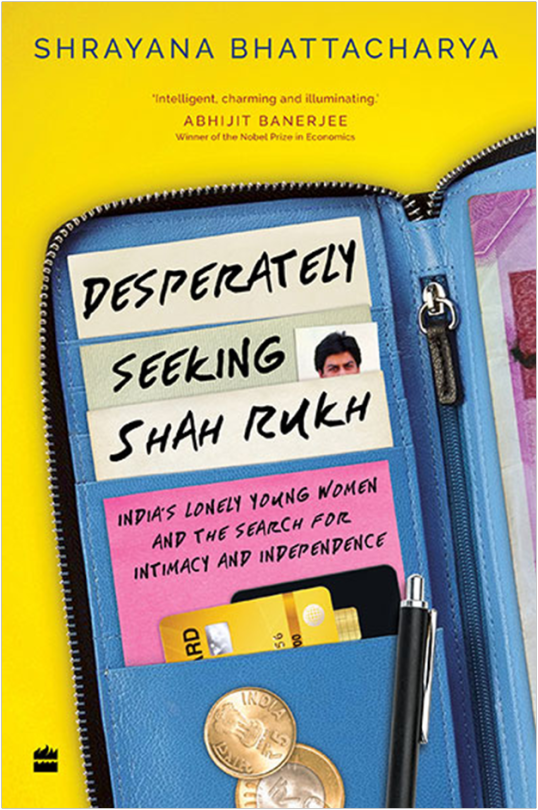#Sanskrit Home Tutor in New Delhi
Explore tagged Tumblr posts
Link

Are you looking for a Sanskrit Home Tuitions in Delhi for your kids? Then take a look at Dr Ramesh Mishra – he is one of the top qualified and experienced Sanskrit Home Tutor in Katwaria Sarai. He is the one who can easily help your child to create interest in the Sanskrit language to get good marks in their academics. For any inquiry regarding tuitions, visit: http://hindisanskrittutor.in or you can directly call him at 9810766253.
#Sanskrit Home Tutor in Katwaria Sarai#Sanskrit Home Tutor in New Delhi#Sanskrit Home Tutor in Delhi#Sanskrit Home Tutor#Sanskrit Home Tutors#Sanskrit Home Tuitions in Delhi#Sanskrit Home Tuitions in New Delhi#Sanskrit Home Tuitions in Katwaria Sarai
0 notes
Text
Books by Debut Authors You'll Love to Read
f you are a book lover like me, then this post is totally for you. I have a list of books by debut authors that readers have adored the most. I have seen some amazing reviews for each of these books and I can’t resist sharing them with you.

Almond by Won-pyung Sohn
Yunjae was born with a brain condition called Alexithymia that makes it hard for him to feel emotions like fear or anger. He does not have friends—the two almond-shaped neurons located deep in his brain have seen to that—but his devoted mother and grandmother provide him with a safe and content life. Their little home above his mother’s used bookstore is decorated with colorful Post-it notes that remind him when to smile, when to say "thank you," and when to laugh.

Rumours of SpringBy Farah Bashir
Rumours of Spring is the unforgettable account of Farah Bashir’s adolescence spent in Srinagar in the 1990s. As Indian troops and militants battle across the cityscape and violence becomes the new normal, a young schoolgirl finds that ordinary tasks – studying for exams, walking to the bus stop, combing her hair, falling asleep – are riddled with anxiety and fear.

Desperately Seeking Shah RukhBy Shrayana Bhattacharya
In this pathbreaking work, Shrayana Bhattacharya maps the economic and personal trajectories–the jobs, desires, prayers, love affairs and rivalries–of a diverse group of women. Divided by class but united in fandom, they remain steadfast in their search for intimacy, independence and fun. Embracing Hindi film idol Shah Rukh Khan allows them a small respite from an oppressive culture, a fillip to their fantasies of a friendlier masculinity in Indian men. Most struggle to find the freedom-or income-to follow their favourite actor.

The House Next to the FactoryBy Sonal Kohli
Set largely in Delhi between 1980 and 2010, the nine interlinked stories in The House Next to the Factory follow Kavya and her post-Partition immigrant family, their servants, tutors, cousins and lovers, their loneliness, aspirations and small-scale ambitions. Delicate and finely textured, SonalKohli’s extraordinary debut lays bare the complexities of class and culture, even as it evokes the loves and triumphs, the pull of incongruous desires and the tragedies of everyday life.

Ladies’ Tailor By Priya Hajela
This is a story of Gurdev and his cohort, a group of refugees who travel east from Pakistan after Partition. It is a tale of falling apart and coming together as the world burns around them.
Will Gurdev be successful in his new business of making garments for women? Will he find love after his wife and children leave his side? There may be uncertainty here, but there is also relentless hope.

Lost GirlBy Sana Shetty
In the nondescript town of Fagu, a few kilometres from Shimla, retired police officer Vanessa and her husband Aidan are coasting through a blissful post-retirement life and running their quaint cafe. One day, on their usual morning trek in the mountains, they notice something in the bushes, something that shouldn’t be there. At the end of a hidden track, there’s a young girl, barely in her twenties, badly hurt and unconscious.

The IlluminatedBy Anindita Ghose
A superbly nuanced work of fiction, Anindita Ghose’s first novel The Illuminated revolves around two women: Shashi and Tara. After the sudden death of her celebrated husband, Shashi is alarmed to realize that overnight, she has lost her life’s moorings. Meanwhile, their fiercely independent daughter Tara, a Sanskrit scholar, has been drawn into a passionate involvement with an older man, which threatens to consume her in ways she did not imagine possible.

Open BookBy KubbraSait
From being an awkward teen in braces to becoming a sought-after master of ceremonies to successfully portraying the transgender Cuckoo on the hit Netflix series Sacred Games, KubbraSait has broken boundaries and made a name for herself. Her ordinary upbringing notwithstanding, Kubbra is an extraordinary woman who quickly learnt how to deal with the harsh ways of the world and shape her life successfully despite them. The bullying she encountered in school as a child helped her face nepotism in Bollywood, an industry known to favour its own, often at the cost of talented ‘outsiders’.
0 notes
Text
Why we use Sanskrit words in yoga classes?
You must have noticed that Sanskrit names are used while teaching yoga in yoga courses all around the globe. So whether you are a new yogi or you have been practicing yoga asanas for a long time, you must have heard Sanskrit words. The main reason for this is that this ancient language was used by the first yogis who were responsible for the existence of yoga.
So it can be said that the Sanskrit language is ingrained with Yoga. The gradual exposure to the traditional Sanskrit words can help yoga learners to learn much more than simple asanas in the process.
Want to learn Sanskrit from an expert, click: Sanskrit Home Tutor!

Sanskrit words enhance the yoga process
When Sanskrit words are used in yoga classes, you might feel overwhelmed at first. But gradually you will understand their application in the yoga setting makes the teaching and learning process easier and enjoyable. When you get a grasp of the ancient language, you can realize that they make the teaching and learning instructions much more clear and simple.
Breaking down of barriers
Sanskrit in yoga has numerous advantages for yoga practitioners. One of the key benefits is that the Sanskrit words break down the barriers that might arise when people from different cultural setting learn these exercises. It acts as the universal language which allows yogis to connect at a spiritual level.
So this universal language fundamentally establishes a deeper connection among the practitioners. The Sanskrit words in the yoga setting might seem perplexing at first, but ultimately it creates value for the yogis and enhances their understanding of various yoga asanas.
Take Hindi tuitions from Sanskrit Language Home Tutor in Delhi!
Soothing properties of Sanskrit words
The role of the sound of the Sanskrit words that are used in the yoga setting is of supreme importance. The Sanskrit language helps the learners to get an insight into the traditional Indian philosophies and values.
One of the most common Sanskrit words that are used to create the right ambience is ‘Om.’ This word is chanted before any yoga session begins. It is believed that this simple Sanskrit name represents the entire creation process.
The Sanskrit language has a deep connection with Yoga
The Sanskrit words and Yoga asanas are interlinked with one another. The ancient language helps yogis to gradually progress along the path of yoga and understand the traditional exercise approach.
It assists the overall yoga process by strengthening the level of clarity of the yoga practitioners. The Sanskrit names are an indispensable element in the yoga setting as the words help in connecting the yogis with ancient traditions, the entire universe, and their inner self.
For more details about the Sanskrit Language or if you want to learn this great language, visit: http://hindisanskrittutor.in/ or you can directly call us @9810766253.
0 notes
Text
26 Interesting facts about Dr. B.R. Ambedkar
Bhiva Ramji Ambedkar also known as Bhimrao Ramji Ambedkar, Babasaheb Ambedkar & B.R. Ambedkar was an Indian jurist, economist, politician and social reformer born on 14th April 1891 to Ramji Maloji Sakpal and Bhimbai Ramji Sakpal.
He inspired the Dalit Buddhist movement and campaigned against social discrimination towards the untouchables that is the Dalits, while also supporting the rights of women and labour. B.R. Ambedkar was independent India’s first law and justice minister, the principal architect of the Constitution of India, and a founding father of the Republic of India.
Ambedkar was a creative student earning Doctorates in Economics from both Columbia University and the London School of Economics and attained a reputation as a scholar for his exploration in Law, Economics, and Political Science. In his initial career he was an economist, professor, and lawyer. Ambedkar’s later life was notable by his political exercise; he became embroiled in campaigning for India’s Independence, publishing journals, justify political rights and social freedom for Dalits, and devoting significantly to the formation of India. Later in 1956, Ambedkar converted to Buddhism inducting mass conversions of Dalits to the same.
He died on 6th December 1956 due to illness. In 1990, India’s highest civilian award the Bharat Ratna was posthumously conferred upon B.R. Ambedkar for his contributions to the country.
INTERESTING FACTS
There are some interesting facts regarding Ambedkar. Some of them are as follows:
Ambedkar was born into a poor low Mahar, (dalit) caste in the town and military cantonment of Mhow in the Central Provinces (now in Madhya Pradesh). Ambedkar was the last child (14th) of Ramji Maloji Sakpal and Bhimabai Murbadkar Sankpal. He and his family was of Marathi background from the town of Ambavade (Mandangad taluka) in Ratnagiri district (modern-day Maharashtra). His family belonged to the Mahar caste, who were treated as untouchables and was subjected to socio-economic discrimination. Ambedkar’s ancestors had long been in the employment of the army of the British East India Company, and his father served in the British Indian Army at the Mhow cantonment.
Although able to attend school, Ambedkar and other untouchable children were segregated and given little attention or assistance by the teachers. They were not allowed to attend inside the class. If the untouchables needed to drink water, someone from the higher caste would have to pour water from a height as they were refrained to touch either the water or the vessel that contains water. This was usually performed for the young Ambedkar by the school peon, and if the peon was not available then he had to go without water; the situation he later in his writings described as “No peon, No Water”. He was to sit on a gunny sack which he had to take home with him everytime.
Among his brothers and sisters, only Ambedkar succeeded in passing his examinations and graduating to a high school. His authentic surname Ambavadekar is derived from his native village ‘Ambavade’. Mahadev Ambedkar his Brahmin teacher, who was fond of Ambedkar, changed his surname from ‘Ambavadekar’ to his own surname ‘Ambedkar’ in school records.
In the year 1897, his family moved to Bombay where Ambedkar became the only untouchable enrolled and attended at Elphinstone High School.
In 1913, he moved to the United States as he had been awarded a Baroda State Scholarship of £11.50 (Sterling) per month for three years under a scheme established by the Gaekwar of Baroda to provide opportunities for postgraduate education at the Columbia University in New York City. Soon after arriving there he settled in the rooms at Livingston Hall with Naval Bhathena, a Parsi who was to be Ambedkar’s lifelong friend. He passed his M.A. majoring in Economics, with Sociology, History, Philosophy and Anthropology as other subjects of study in June, 1915; he presented a thesis, Ancient Indian Commerce. B.R. Ambedkar was the first Indian to pursue a doctorate in economics from foreign university.
In 1916 he completed his second thesis, National Dividend of India-A Historic and Analytical Study and finally he received his PhD in Economics in 1927 for his third thesis, after he left for London.
In 1923 he took his D.Sc.in Economics, and the same year he was called to the Bar by Gray’s Inn. His 3rd and 4th Doctorates that is in (Ll.D, Columbia, 1952 and Ll.D., Osmania, 1953) were conferred upon him honoris causa. Incidentally, in 1917 he travelled separately from his collection of books, which were lost when the ship that the collection on which they were dispatched was torpedoed and sunk by a German submarine.
Ambedkar was bound to serve the Princely State of Baroda as he was educated by the Princely State of Baroda. Ambedkar in turn was appointed as the Military Secretary to the Gaikwad but he had to quit within a short period of time. He described the incident in his autobiography called “Waiting for a Visa”. After quitting, he tried to find ways to make a living for his growing family. Ambedkar worked as a private tutor, as an accountant, and in turn established an investment consulting business. It failed when his clients found that he was an untouchable. In 1918 he became a Professor of Political Economy in the Sydenham College of Commerce and Economics in Bombay. Even though he was successful with the students of the institution, other professors objected to his sharing the same drinking-water jug that they all used.
Ambedkar had been invited to testify before the Southborough Committee, which was preparing the Government of India Act of 1919. Before the committee, Ambedkar argued for creating separate electorates and reservations for untouchables and other religious communities.
While practicing law in the Bombay High Court, he tried to uplift the untouchables in order to educate them. He firstly organised an attempt to achieve this by forming the Bahishkrit Hitakarini Sabha, which was designed to promote education and socio-economic improvement, as well as the welfare of “outcastes”, also referred as the depressed classes. To protect the Dalits and protection of such rights he started many periodicals like Mook Nayak, Bahishkrit Bharat, and Equality Janta.
The Mahad Satyagraha of 1927 was one of the defining moments in Ambedkar’s political thought and action. It was held in the small town of Mahad in Maharashtra. The Mahad Satyagraha was held 3 years prior to Mahatma Gandhi’s Dandi March. Ambedkar’s crusade was concentrating on Drinking Water while salt was the centre of Gandhi’s campaign. By leading a group of Dalits to drink water from Chavadar Lake in Mahad, Ambedkar didn’t just assert the right of Dalits to take water from public water sources, he sowed the seeds of Dalit emancipation.
Ambedkar played a key role in establishment of Reserve Bank of India in 1935 that he presented to the Hilton Young Commission.
As the member for Labour in the Viceroy’s Council from 1942 to 1946, Dr Ambedkar was instrumental in bringing several labour reforms. The change of working hours from 12 hours to 8 hours was initiated by him in the 7th session of Indian Labour Conference in New Delhi in November 1942.
Upon India’s Transfer of Power to leaders of High Cast on 15 August 1947, the new Congress-led government invited B.R Ambedkar to serve as the nation’s first Law Minister, which he accepted. On 29th August, he was appointed as the Chairman of the Drafting Committee, charged by the Assembly to write India’s new Constitution. Granville Austin has described the Indian Constitution as the ‘first and foremost a social document’.
It took Ambedkar 2 years & 11 months’ time to prepare the Constitution of the World’s Largest Democracy and came to be known as the Father of the Indian Constitution. Ambedkar has made research on different constitutions which were available at that time but preparing the Constitution under 3 years is a huge achievement.
Ambedkar resigned from the cabinet in 1951 following the hindrance in parliament regarding his draft of the Hindu Code Bill, which sought to expound gender equality in the laws of inheritance and marriage. Ambedkar later, independently contested to an election in 1952 to the Lok Sabha, but was defeated in the Bombay (North Central) constituency by a little-known Narayan Sadoba Kajrolkar by 14561 votes. He was appointed to the Rajya Sabha (Upper House) in March 1952 and remained as member till death.
Article 370 in the Constitution was greatly opposed by Ambedkar, which gives a special status to the State of Jammu and Kashmir, and it was added against his wishes.
According to Ambedkar the industrialization and agricultural industry growth could enhance the economy of the nation. He stressed on the idea of investing money in the agricultural sector as the primary industry of India.
Ambedkar married twice, first to Ramabai and next to Dr. Sharada Kabir.
He framed many laws for Woman Labors of India. Which includes Mines Maternity Benefit, Woman Labour Welfare Fund, Woman & Child, and Labour Protection Act.
He studied Buddhism all his life, and around 1950, he turned his attention fully to Buddhism and travelled to Ceylon (now Sri Lanka) to attend a meeting of the World Fellowship of Buddhists. While dedicating a new Buddhist Vihara near Pune, Ambedkar revealed that he was writing a book on Buddhism, and that as soon as it was finished, he planned to make a conversion to Buddhism.
Bhimayana: Experiences of Untouchability is a graphic novel narrates episodes from the life of Ambedkar using Pardhan-Gond style by Durgabai Vyam and Subhash Vyam. The book published was identified as one of the top 5 political graphic novel by the CNN. Author Prabhakar Joshi, began writing a biography on Ambedkar in Sanskrit in 2004. Prabhakar Joshi completed the work, Bhimayan, comprises 1577 shlokas and is intended as an atonement for the injustice done to the young B.R. Ambedkar by some teachers.
A 20-page autobiographical story written by Ambedkar in 1935-36 (after his return from America and Europe), Waiting for a Visa is a book thatdraws from his experiences with untouchability, starting from his childhood. This book is used as a textbook in Columbia University, New York (USA).
In Ambedkar’s book “Thoughts on Linguistic States” (published in the year 1995), he suggested splitting Madhya Pradesh and Bihar. After 45 years from the date of finishing the book, the split finally came with the formation of Jharkhand out of Bihar and Chhattisgarh out of Madhya Pradesh.
Ambedkar was the pioneer of multipurpose river valley projects in India. He initiated the Damodar Valley project, the Bhakra Nangal Dam project, the Son River Valley project and Hirakud dam project. Ambedkar established the Central Water Commission to promote the development of irrigation projects at both the Central and the State level.
India’s power sector development was because of the spark ignited by Ambedkar. Ambedkar established the Central Technical Power Board (CTPB) and Central Electricity Authority to explore the potential of and establish hydel and thermal power stations. He also emphasized on the need for a grid system (which India still relies on) and well-trained electrical engineers in India.
B.R. Ambedkar is one of the major reformist who paved way for further development and his vision for better India still lives on. Dr B.R. Ambedkar is the messiah of Dalits and downtrodden in India. In spite of childhood hardships and poverty Ambedkar with his hard work and dedication went on to become the highest educated Indian of his generation.He is one of the greatest leaders of India who always stood for the equality of Untouchables and other lower castes. He was an activist who demanded social equality and justice. He was the forefather of Republic India. Thus, Dr B.R. Ambedkar was a leader who throughout his life fought for justice and equality.
The post 26 Interesting facts about Dr. B.R. Ambedkar appeared first on Legal Desire.
26 Interesting facts about Dr. B.R. Ambedkar published first on https://immigrationlawyerto.tumblr.com/
0 notes
Text
Some Exciting Reasons to Learn Hindi
Most people choose to study foreign languages because they can somehow benefit from learning a certain language. Although language learning challenges the mind and opens your horizons, certain languages provide more benefits than others. Hindi is a language like that.
Reasons to Learn Hindi:
You’ll be able to Have a Conversation with Half a Billion New Friends
One of the key reasons that many people wish to learn a language is to communicate with more people worldwide. Almost half of a billion people around the world speak Hindi, making it the 2nd most regularly spoken language in the world. Hindi is the official language of the world’s largest democracy “India”.
Want to learn Hindi from an expert, click: Hindi Language Home Tutor!

You’ll Be in Good Company
Hindi is the official language of India (a second largest country on the planet), making it an attractive option for people who want to learn a new language. As a second language, almost 200 million people speak Hindi. You'll join a big and diverse community if you become fluent and, as so many people learn Hindi, it won't be hard for you to find someone to teach you.
You’ll be working in India
It is quite popular to migrate to India for work. It is a large country with a variety, from tourism to manufacturing, technology to finance and many more. It will be extremely beneficial as being fluent in Hindi whether you design the graphics for a resort in Mumbai or run a technology company in New Delhi.
The same could happen to those who work with people from India and live in English-speaking countries. Because so many development jobs are currently outsourced to India, you can end up with your team on phone calls who talk Hindi regularly.
Not only is studying Hindi allowing you to communicate better, but also helps you improve your Hindi skills with native speakers of this language. Many native speakers are very happy to help, so do not be scared to ask something if you have questions for Hindi speakers in your working atmosphere!
Take Hindi tuitions from Hindi Home Tutors in Delhi!
You’ll have Additional Professional Opportunities
Learning any new language will strengthen your resume and impress prospective employers, but learning Hindi could be additionally beneficial. Since language is so common, some universities, businesses and governments provide special opportunities to those who speak it fluently.
You’ll be Able to Enjoy Bollywood Films
When most people think of Hollywood, California, as the centre of the film industry. The successful film industry of India, though, is becoming a major competitor. In 2012, more than 2.6 billion tickets were acquired to watch Bollywood films, which are very famous for their flashy music and drama.
If you will study Hindi, you may have access to movies that you would have failed to watch otherwise. While it's definitely possible to watch foreign films with subtitles, but if you recognize what is being said, you will have a better viewing experience. Watching Bollywood films is a great way to learn Hindi, while still studying, to take up the subtle nuances of the language.
You’ll be Deepening Your Spirituality
In many meditative compositions, Hindi is used. Language can be learned hand in hand if you are interested in starting a meditation practice. Most religious books, not to mention numerous fictional tales, groups of poetry and other written work are published in Hindi. Hindi has the capacity of opening your mind to a really special world of all the languages you might understand.
You’ll be marrying into a Culture
The bulk of language learning articles concentrate on training for self-improvement, jobs or brain health purposes. These are all excellent factors, but there is another feature which is less frequently discussed and which is falling in love with someone from another country.
If you are an English speaker and you have a partner who speaks Hindi fluently, then you may want to learn the language of your companion to communicate better. This scenario increases your chances of achievement as you always have a trainer to help you in learning.
Want to learn Hindi, click: Hindi Tutor in Delhi!
You’ll be Prepare to Learn Other Languages in the Future
Many people fear that it will complicate their minds and interrupt them if they try to learn various new languages, but it does not work like that. The more languages you usually know, the better it is for you to keep learning them.
This is because you’ll have developed:
Confidence in your ability to learn a language.
Skills and study techniques that will help boost the learning process.
Cognitive abilities and an understanding of language structure.
Foreign Languages: An Excellent Time to Begin Learning
Learning a new language is cumulative. You don't have to wait for the right time to start. The belief that there will be "the right time" is a mistake made by many and this causes why most choices and priorities end up failing to meet. If you allow it you will always be busy and have other priorities.
Alternatively, dedicate yourself to studying Hindi at the right pace will work for you. In any scenario, any time you study, you will still develop new knowledge and with the simple language apps that are available today, learning is simpler than ever.
For more details about the Sanskrit Language learning, visit: http://hindisanskrittutor.in/ or you can directly call us @9810766253.
#Hindi Home Tuitions#Hindi Sanskrit Teacher#Hindi Language Home Tutor#Hindi Home Tutors In Delhi#Sanskrit Home Tutors In Delhi
0 notes
Text
Find Best Home Tutor for Your Child in Delhi
Does your child ask you could you assist me? Quite frequently parents are faced by an embarrassing moment when the work the child is performing overwhelms them and they're stuck for a response. This is the position when you will need someone to help you. Dr Ramesh Mishra is one of the best Hindi and Sanskrit Home Tutor in Delhi NCR.
As Sun is the core of our solar system and has the most outstanding quality of our solar system also gives us all life. Just like this Dr Mishra is the core of Private Tutoring in Delhi also provider of greatest knowledge for pupils. Old individuals come the inspirations for the new ones with wisdom because of expertise. Having experience of two decades in teaching, he is best option for pupils’.

He anticipate serve your tutoring requirements by targeting the pupils specific needs and strengthening the pupils study habits and critical thinking abilities; he empower the student to reach their full academic potential. His first priority is student’s learning satisfaction. No tutor in Delhi provides service better than him. As you know, it may take a particular person for a good teacher. Teaching and tutoring are challenging and rewarding careers.
He considers that there are many features which produce a great tutor: Favorable Outlook: understanding that you will find many answers to each problem - Wish to Help Others: openness to work with every student one-on one and be actively engaged - Even Disposition: patience, gentleness, understanding, and equity - Open Mind: openness to take thoughts - Initiative and Enthusiasm: being enterprising and with passion for work - Organization: preserving order - Reliability: being punctual and reliable – Since his outstanding Teaching Sanskrit and Hindi Language skills and knowledge his students are spread all around the Delhi.
Let give him a chance for giving tuitions to your child and give your child an opportunity to get study under one of the best Hindi and Sanskrit Home Tutors in Delhi. We pride ourselves on finding the ideal tutor to suit your needs. We do the process of finding a tutor without problems. East or West, Dr Ramesh Mishra is the Best. This isn't just a slogan, but we guarantee Success, Results also Satisfaction.
For more details, visit: http://hindisanskrittutor.in/ or you can directly call us @9810766253.
#Basic Sanskrit Teacher#Teaching Sanskrit and Hindi Language#Sanskrit Home Tutor in Delhi NCR#Sanskrit Home Tutors In Delhi#Sanskrit Home Tutor#Sanskrit Language Home Tutor#Sanskrit Expert#Sanskrit Home Tuitions#Hindi Home Tutors In Delhi#Hindi Sanskrit Teacher
0 notes
Text
Sanskrit: The Most Ancient Language of the World And The Method for learning It
Sanskrit is the most earliest and ancient language of the world. It is much older than Latin or Greek language. When the world wasn’t even near to be called civilized, one nation "was contented with its rich civilization, prosperity, knowledge and culture" – Hind, the land absorbed in Sanskrit. Philosophers, economists, scientists and saints of the greatest stature were lived here. They had very vast level of knowledge and after that no generation have failed to match that level. The ancient science, economic theories, debates and records of historical events were all written in Sanskrit.
In Sanskrit there is the knowledge of rich Vedas. Sanskrit is the script of the foundations of our nation. Sanskrit is the mother of all other languages, yet it is being forgotten and ignored by everyone. Now it is not only the mother, but also become the grandmother since the new languages and dialects have been evolved from the languages which were born out of Sanskrit. And nowadays Sanskrit is also a part of our children’s school curriculum. So it is very important for very child to understand its value for studied it properly. For learning a great language like Sanskrit you need to have a well educated and experienced Hindi and Sanskrit Home Tutor Dr Ramesh Mishra, who is well educated and experienced in Sanskrit Grammar and Methodologies.

A tutor is a person who provides assistance to one or more people on certain subjects or areas. The good home tutor spends good time to make the students improve in their subjects and provides academic benefits for learners. Private tutoring has become a very important part in each student’s life, as because the topics that are discussed in the class are not getting properly cleared in the classrooms.
Also a teacher can’t pay attention to each and every student in the class; the crowded environment makes the classroom chaotic. In such cases a good home tutor is very much needed for the students especially for the weaker students. Apart from these, a student must work hard, maintain daily routine, manages his/ her time effectively. He/she should be disciplined enough to be able to cope with the World. He/she must solves/practices sample papers/text books etc.
A good tutor is really helpful in solving all the questions of the students. If you are looking for the best Sanskrit home tutor for your child in Delhi, who helps in his/her homework and make him/her as much sufficient and capable to clear all the difficulties during his/her education, then your search is over now. Dr Ramesh Mishra is one of the best Sanskrit Home Tutors in Delhi to help all the aspiring students to get their concepts cleared with easy solutions.
Dr Ramesh Mishra has also aims for developing the all round growth and development of a child. And hence he is fully committed for nourishing the child in all formats so as he/she can be able to compete with the whole new World of skills bonded together with their confidence and knowledge.
For more details, visit: http://hindisanskrittutor.in/ or you can directly call us @9810766253.
#Sanskrit Home Tuitions#Sanskrit Home Tutor#Sanskrit Home Tutor in Delhi NCR#Learning Sanskrit Language#Sanskrit Language Learning#Sanskrit Home Tutors In Delhi#Sanskrit Tutor#Sanskrit Home Tutor Wanted#Sanskrit Teacher#Basic Sanskrit Teacher#Sanskrit Language Home Tutor
0 notes
Link

Are you looking for Sanskrit home tuitions in Katwaria Sarai? Then Dr Ramesh Mishra is the ideal choice for you. He is an expert Sanskrit Home Tutor in Delhi NCR teaching from the last 20 years. He has the specialization in Sanskrit and Hindi language for teaching class 6th to 12th. Call for getting tuitions at 9810766253 or visit: http:/hindisanskrittutor.in for more details.
#Sanskrit Home Tutor in Delhi NCR#Sanskrit Home Tuitions in Katwaria Sarai#Sanskrit Home Tuitions in New Delhi#Best Sanskrit Home Tuitions in Katwaria Sarai
0 notes